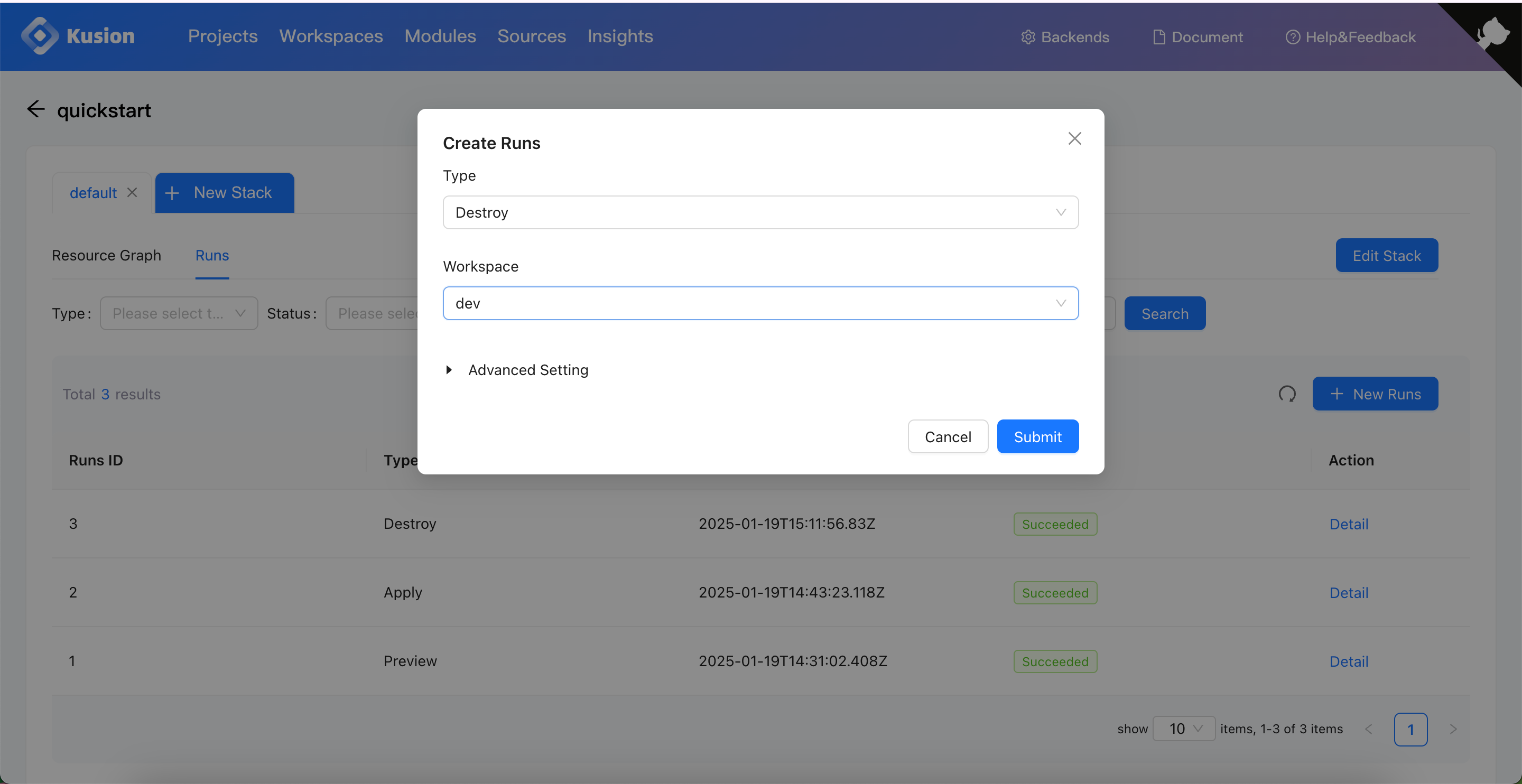Run Your First App on Kubernetes with Kusion Server
In this tutorial, we will walk through how to deploy a quickstart application on Kubernetes with Kusion. The demo application only contains the Namespace, Deployment, and Service resources necessary for a long-running service workload.
Prerequisites
Before we start to play with this example, we need to have the Kusion Server installed and run an accessible Kubernetes cluster. Here are some helpful documents:
- Install Kusion Server.
- Run a Kubernetes cluster. Some light and convenient options for Kubernetes local deployment include k3s, k3d, and MiniKube.
Initialize Backend, Source, and Workspace
We can start this tutorial with the initialization of Backend, Source, and Workspace on Kusion.
First, create a Backend with local file system as Kusion's storage 👇
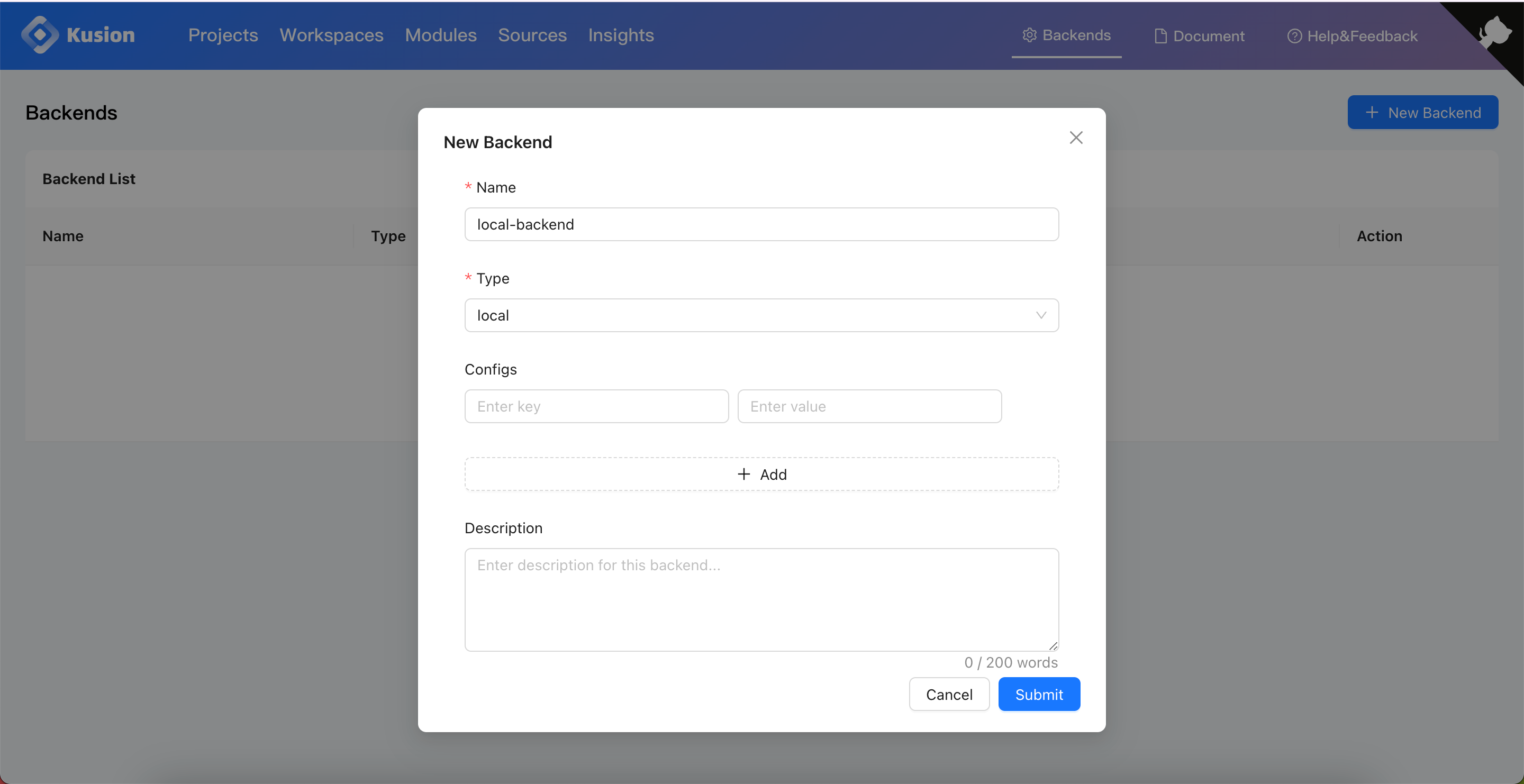
Second, set the sample repository konfig we provided as the Source of application configuration codes 👇
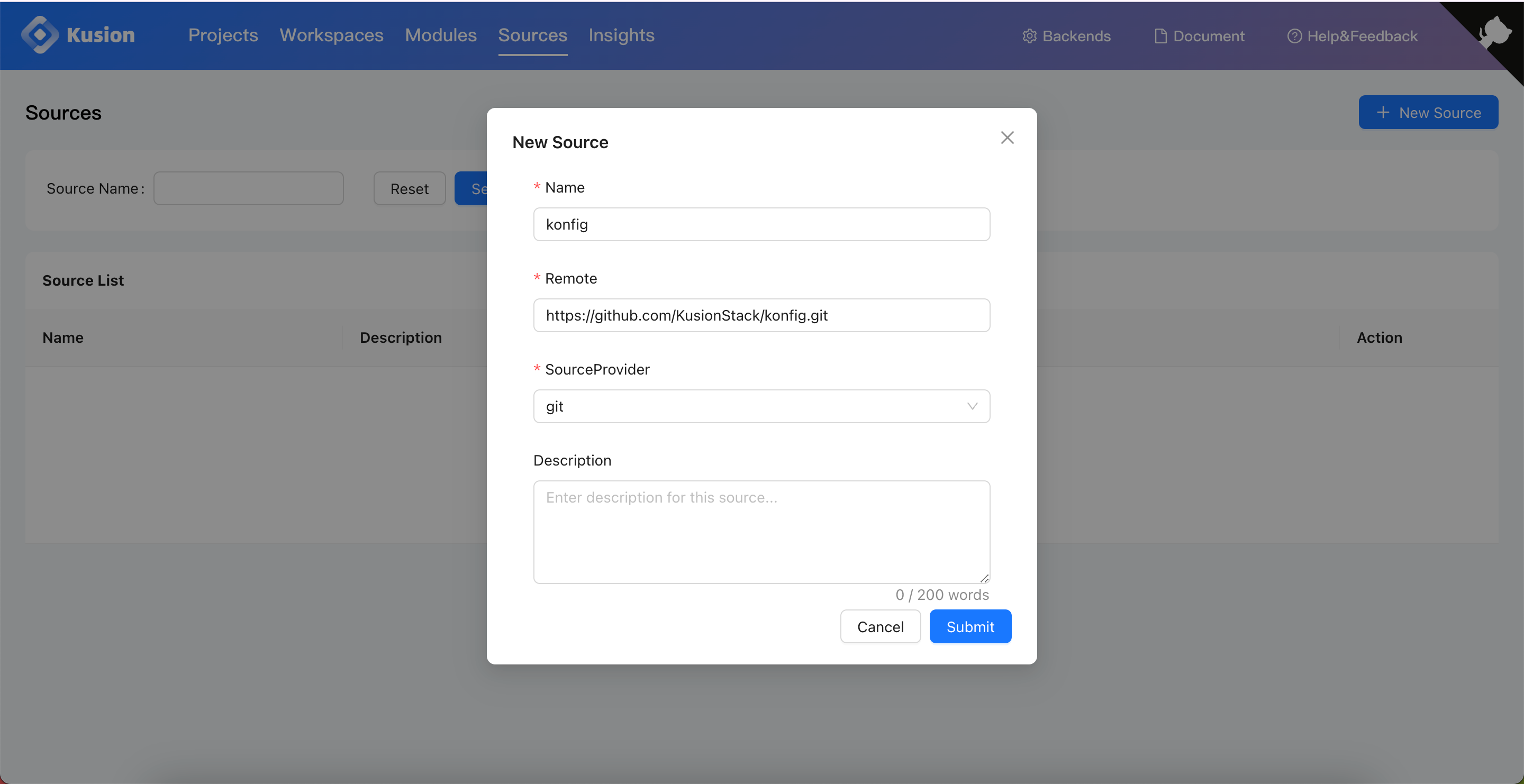
Then, create a Workspace named dev which can correspond to the development environment of the application. After it is created, we can copy the following example configurations into the workspace.yaml. This configuration declares the Kusion Modules that can be used in the application config codes, and specifies the Kubernetes cluster associated with this Workspace.
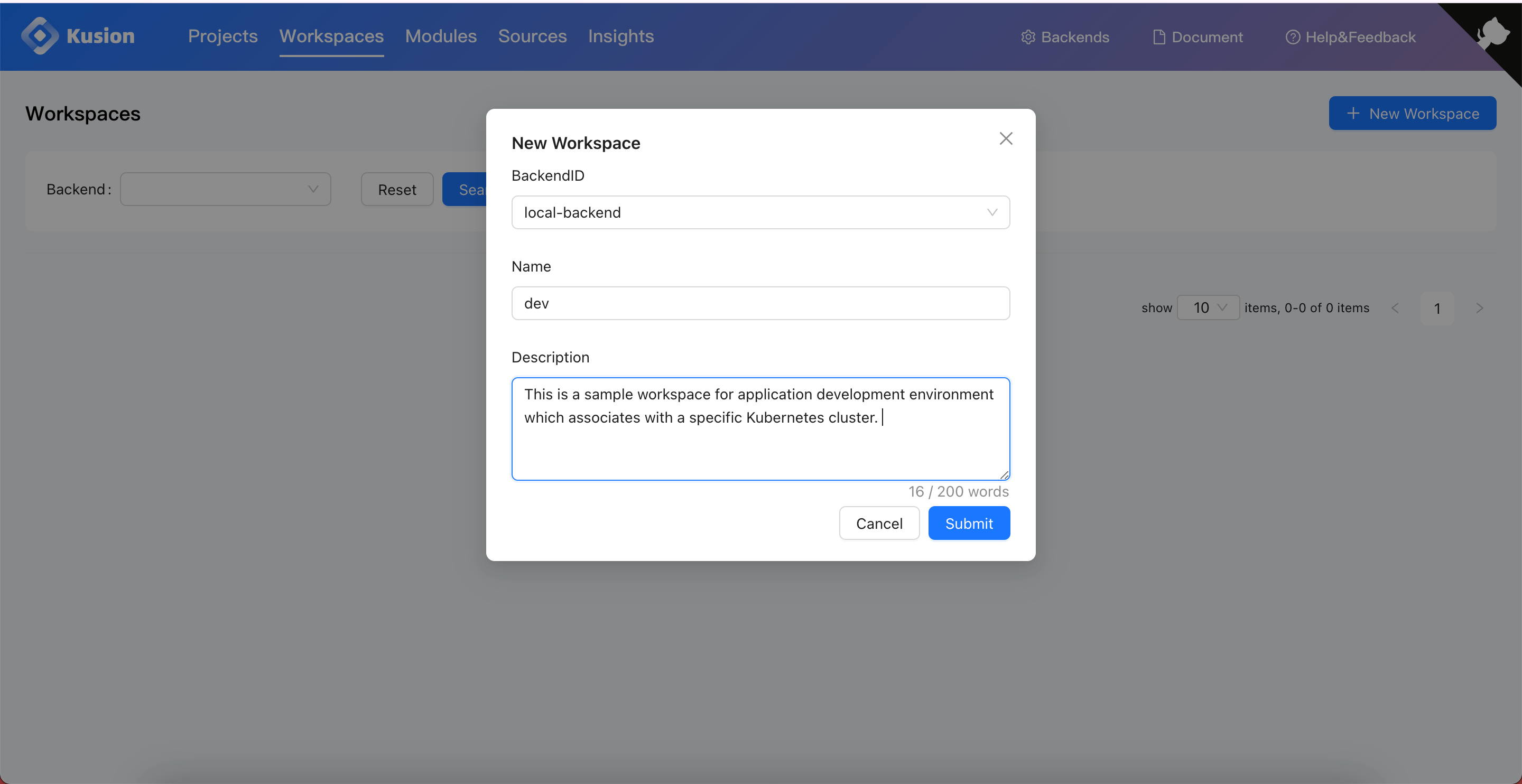
# This is a sample of a `workspace.yaml` configuration, in which three Kusion Modules (kam, service, and network) and
# their specified versions are declared, along with the Kubernetes cluster bound to this workspace.
# Usually, applications deployed to this workspace can only use the Kusion Modules declared in the `workspace.yaml`.
modules:
kam:
path: git://github.com/KusionStack/kam
version: 0.2.2
configs:
default: {}
service:
path: oci://ghcr.io/kusionstack/service
version: 0.2.1
configs:
default: {}
network:
path: oci://ghcr.io/kusionstack/network
version: 0.3.0
configs:
default: {}
context:
KUBECONFIG_PATH: /var/run/secrets/kubernetes.io/kubeconfigs/kubeconfig-0
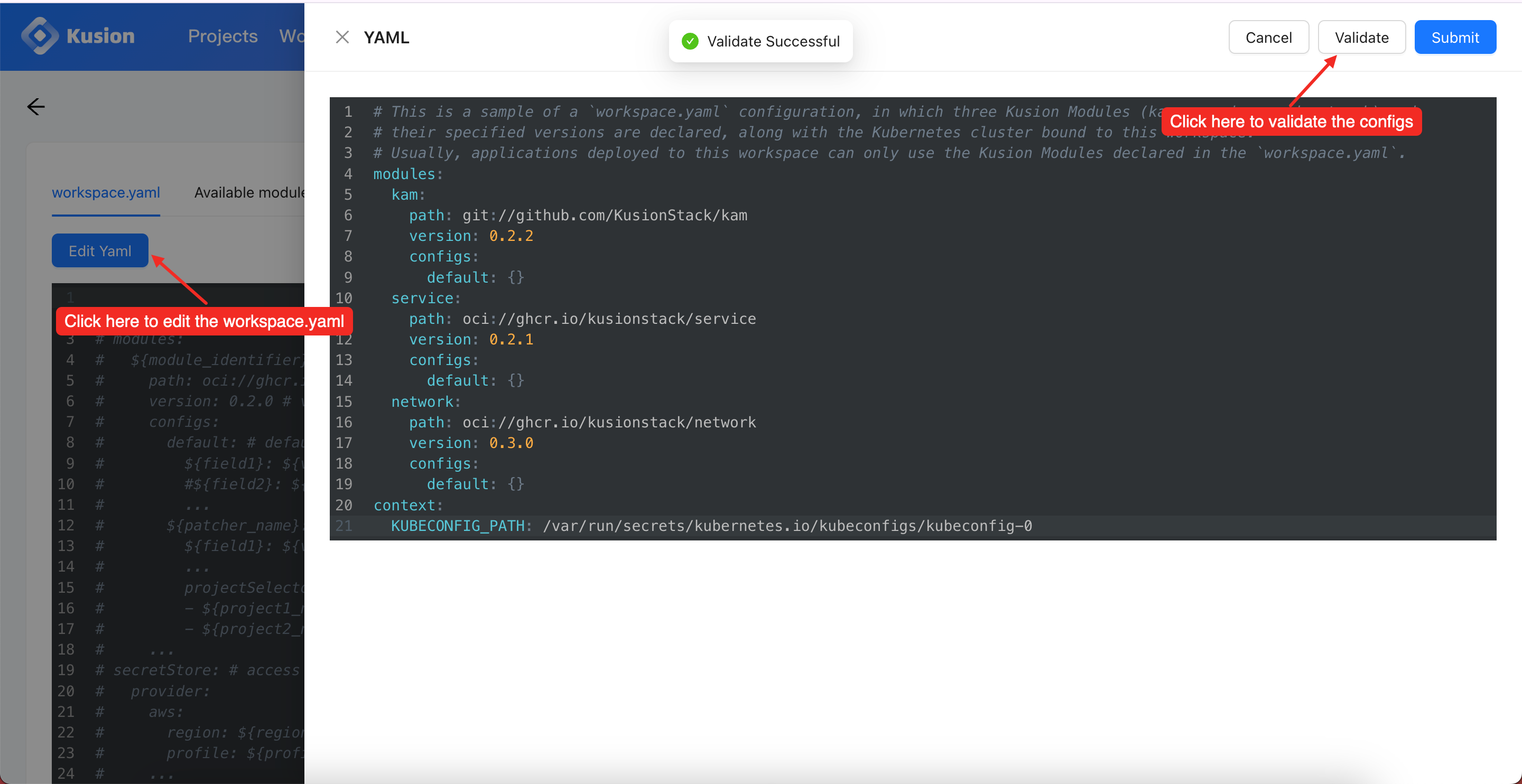
We can check the available Kusion Modules declared in the workspace. The kam, service, and network modules declared in the example have been pre-registered when we installed Kusion.
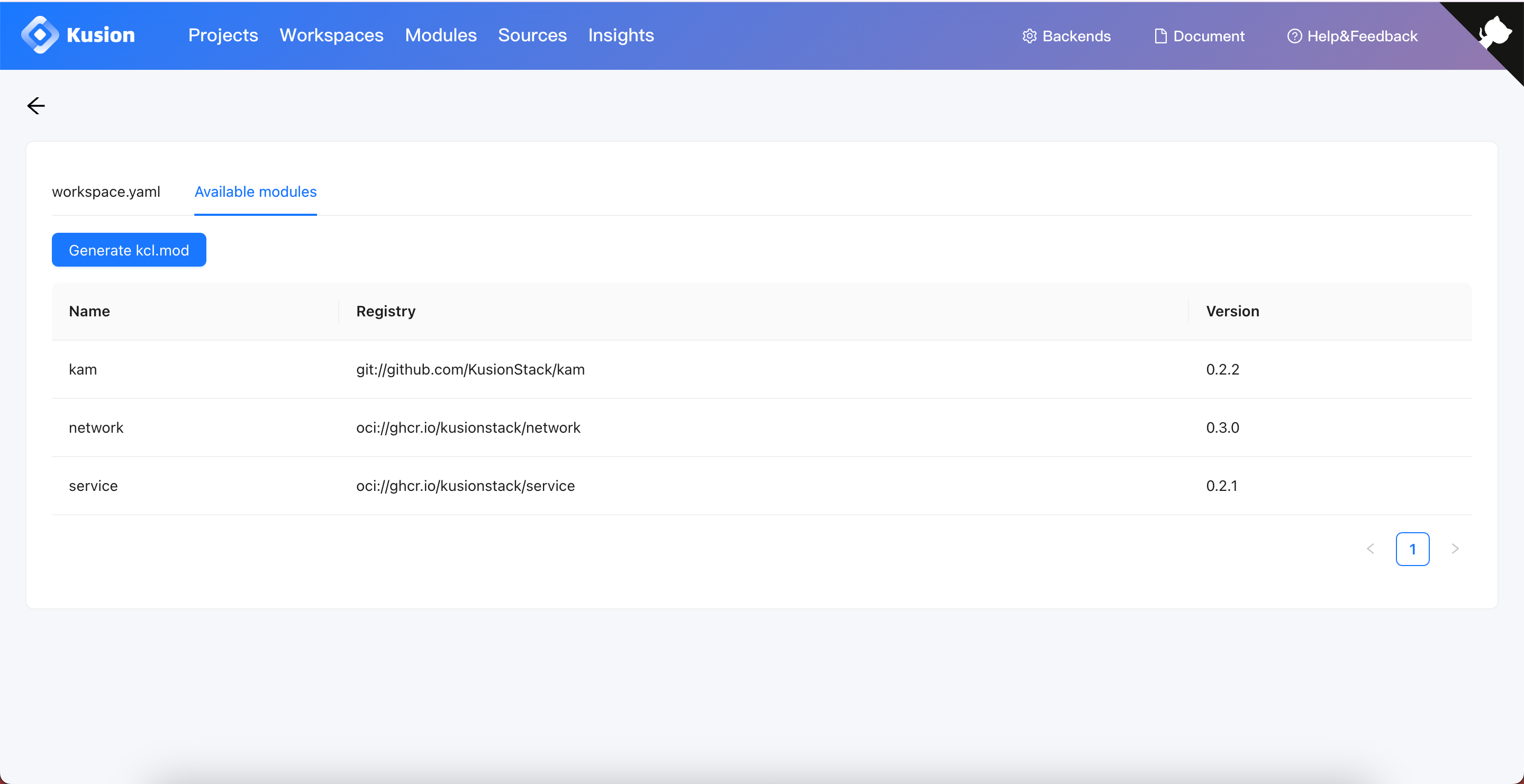
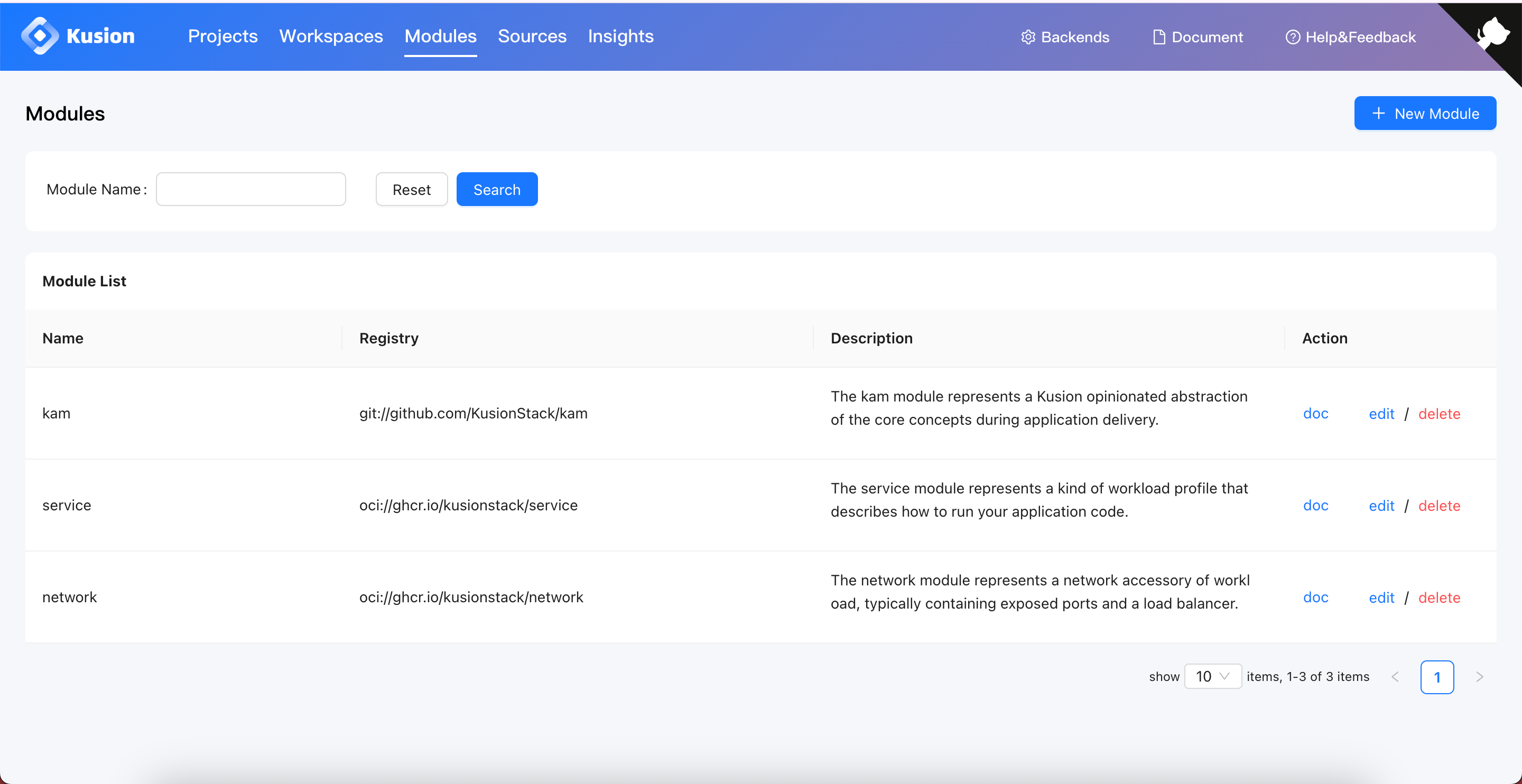
More info about the concepts of Backend, Source, Workspace, and Kusion Module can be found here
Initialize Project and Stack
Next, we can create our first Project and Stack with the Source of konfig repo.
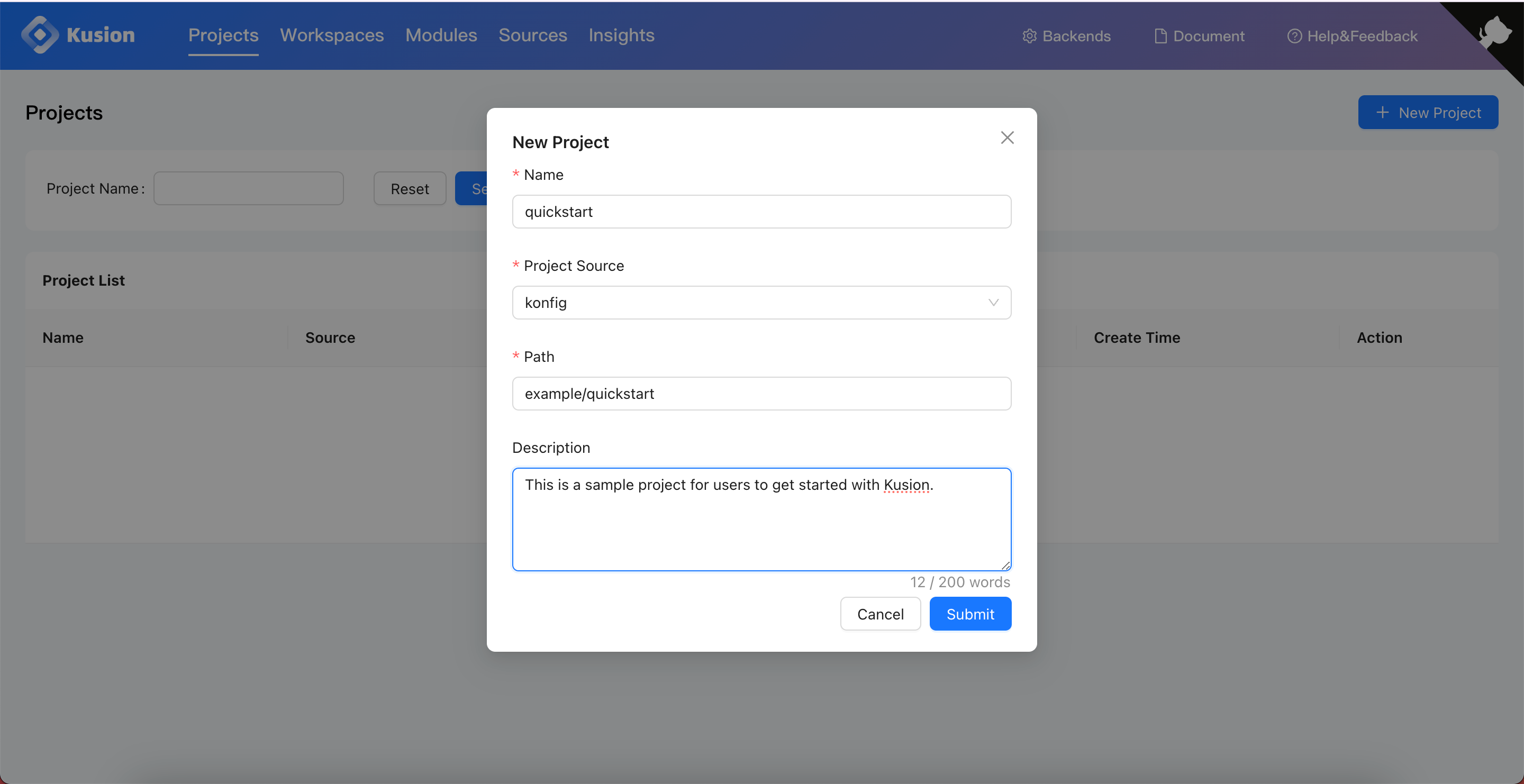
When creating a Project, the path field should be filled with the path of the project relative to the root directory of the Source repo. After the creation, click the project name to initiate a Stack.
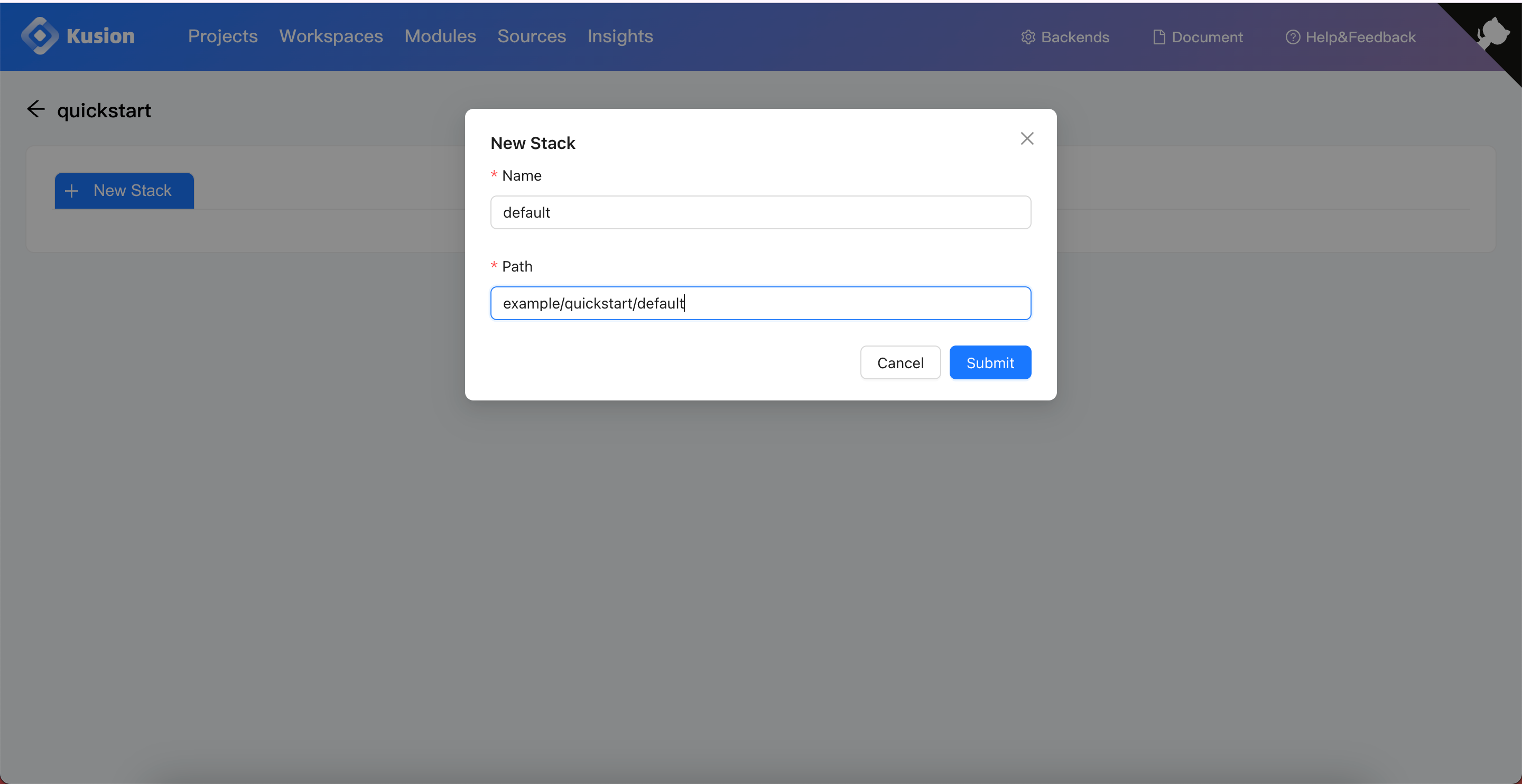
Similarly, the path field of Stack should also be filled with the path of the stack relative to the root directory of the Source repo.
More info about the concepts of Project and Stack can be found here
Review Configuration Files
Now let's have a glance at the configuration codes of default stack in quickstart project, the configuration code link is https://github.com/KusionStack/konfig/tree/main/example/quickstart/default.

The codes in the configuration file main.k are shown below:
# The configuration codes in perspective of developers.
import kam.v1.app_configuration as ac
import service
import service.container as c
import network as n
# `main.k` declares the customized configuration codes for default stack.
#
# Please replace the ${APPLICATION_NAME} with the name of your application, and complete the
# 'AppConfiguration' instance with your own workload and accessories.
quickstart: ac.AppConfiguration {
workload: service.Service {
containers: {
quickstart: c.Container {
image: "kusionstack/kusion-quickstart:latest"
}
}
}
accessories: {
"network": n.Network {
ports: [
n.Port {
port: 8080
}
]
}
}
}
The configuration file main.k, usually written by the App Developers, declares the customized configuration codes for default stack, including an AppConfiguration instance with the name of quickstart. The quickstart application consists of a Workload with the type of service.Service, which runs a container named quickstart using the image of kusionstack/kusion-quickstart:latest.
Besides, it declares a Kusion Module with the type of network.Network, exposing 8080 port to be accessed for the long-running service.
The AppConfiguration model can hide the major complexity of Kubernetes resources such as Namespace, Deployment, and Service which will be created and managed by Kusion, providing the concepts that are application-centric and infrastructure-agnostic for a more developer-friendly experience.
The declaration of the dependency packages can be found in default/kcl.mod:
[dependencies]
kam = { git = "git://github.com/KusionStack/kam", tag = "0.2.2" }
network = { oci = "oci://ghcr.io/kusionstack/network", tag = "0.3.0" }
service = { oci = "oci://ghcr.io/kusionstack/service", tag = "0.2.1" }
More details about the application model and module dependency declaration can be found in Kusion Module guide for app dev.
The specific module versions we used in the above demonstration is only applicable for Kusion after v0.14.0.
Application Delivery
After the initialization, we can start to run the application delivery.
Preview Changes
We can first preview the changes to the application resources that are going to be deployed to the dev workspace.
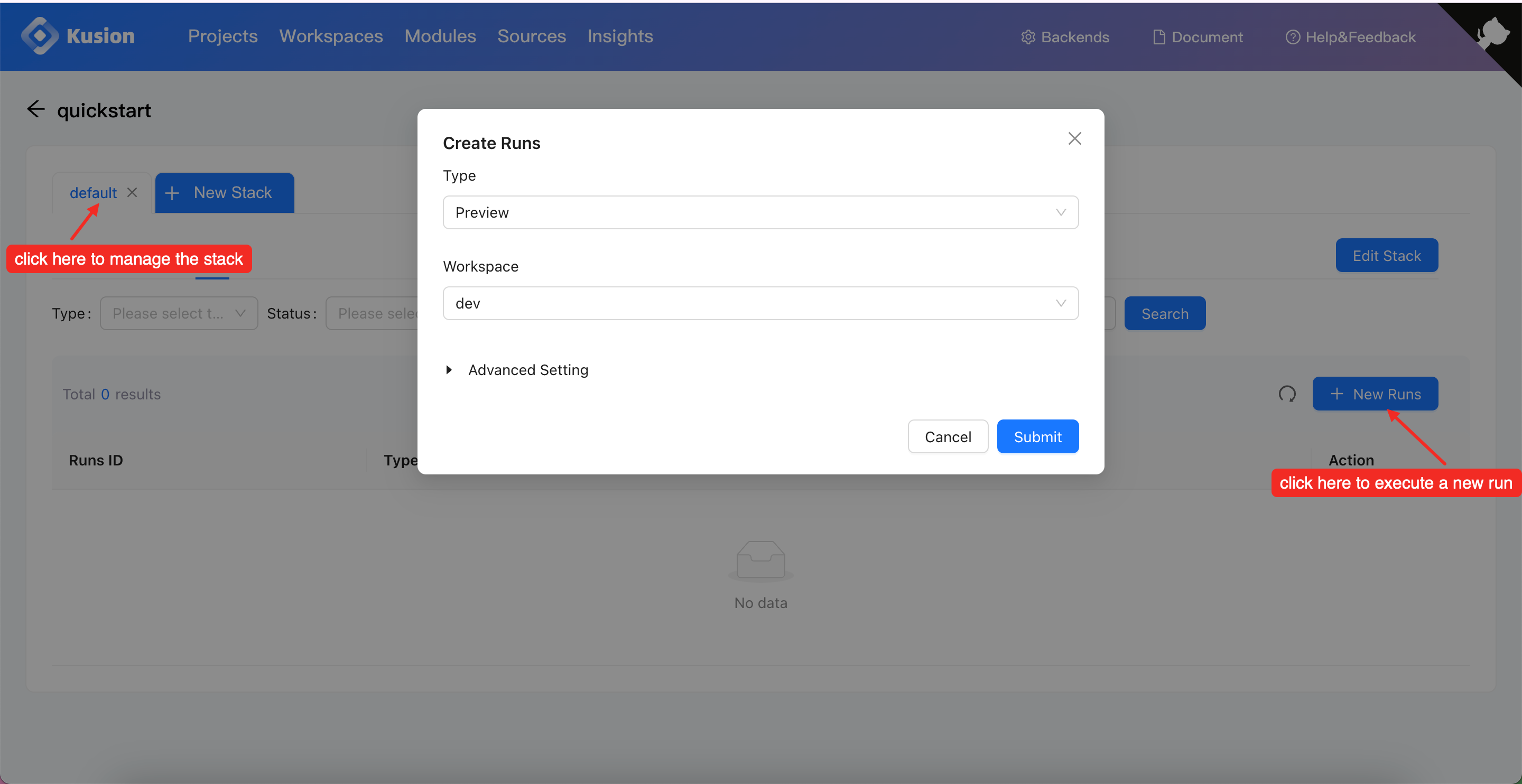
We can click the Detail button to view the Preview results.
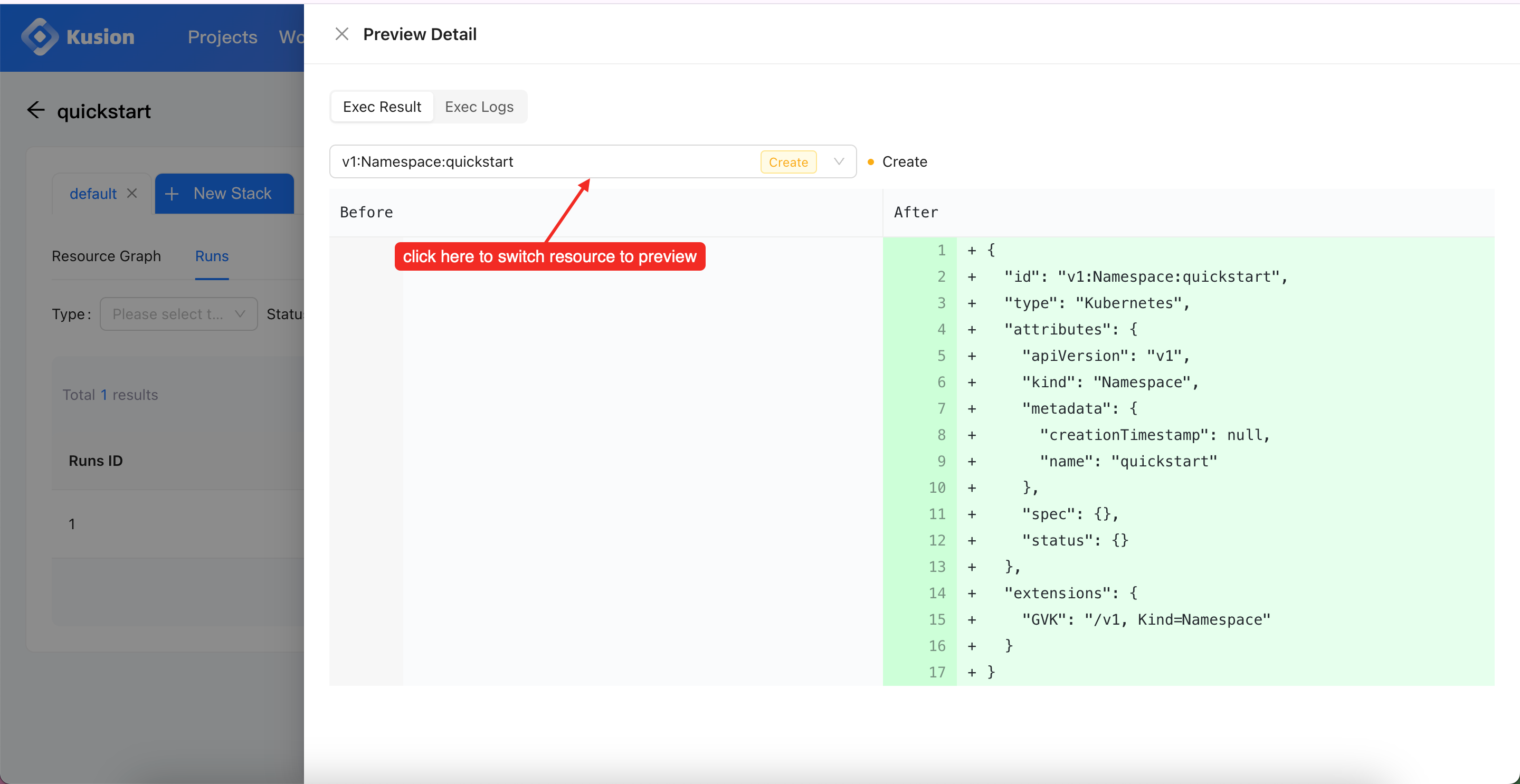
During the first preview, the models and modules that the application depends on will be downloaded, so it may take some time (usually within one minute). You can take a break and have a cup of coffee.
Apply Resources
Then we can create a Run operation of the type of Apply to conveniently deploy the previewed application resources to the Kubernetes cluster corresponding to the dev workspace.
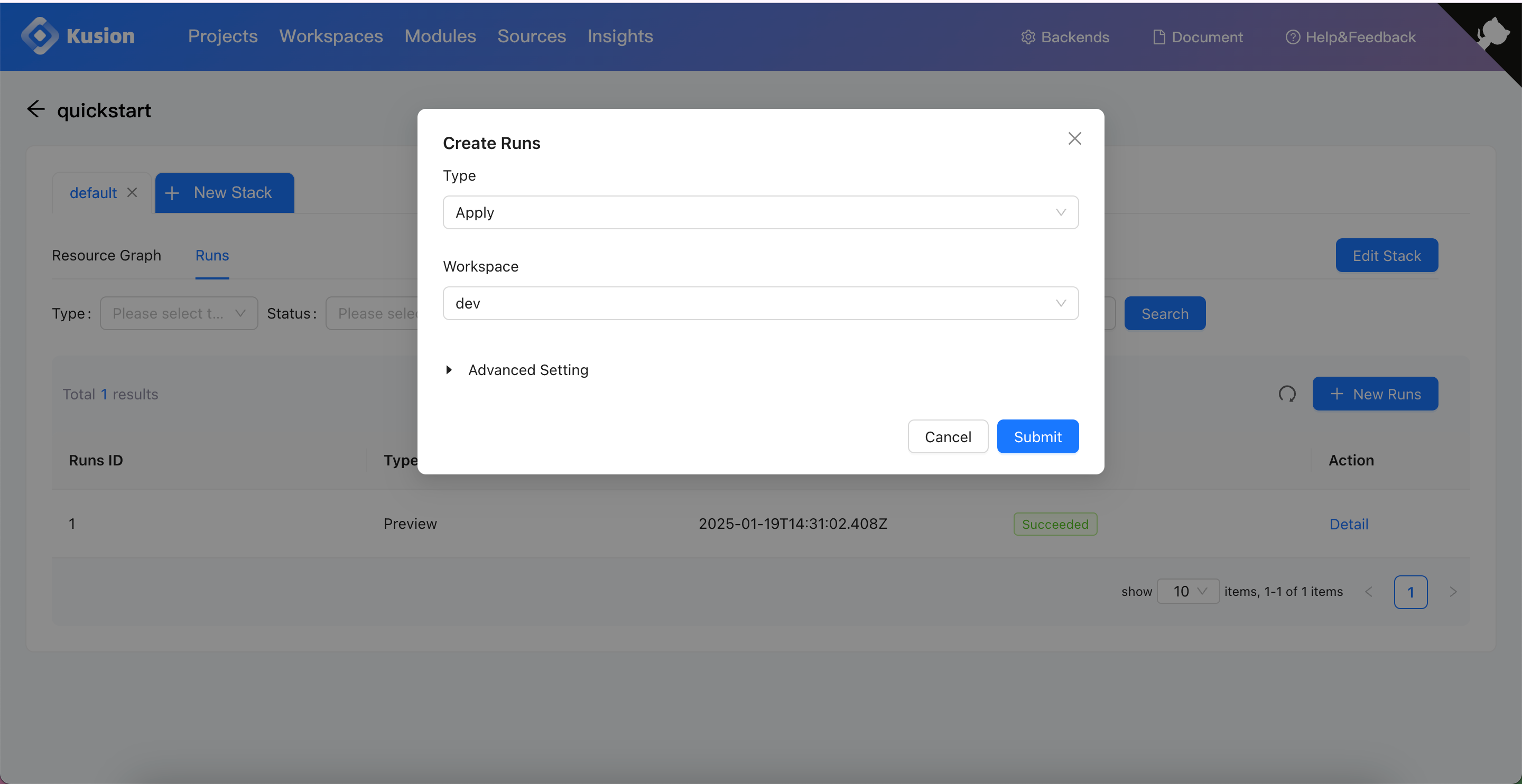
After successfully completing the Apply, we can check the application resource graph, which will display the topology of the application resources.
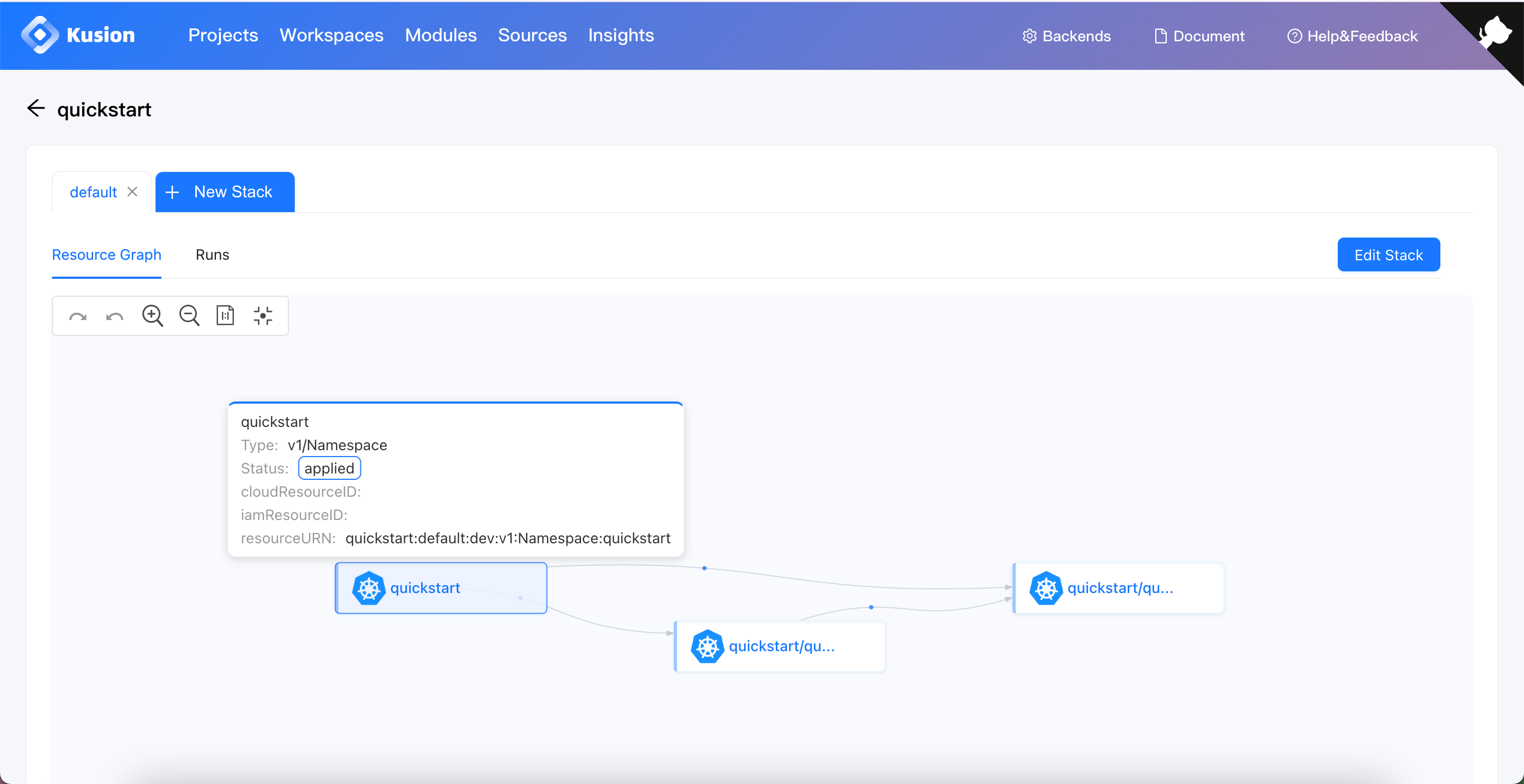
Next, we can expose the service of the application we just applied through port-forwarding Kubernetes Pod and verify it in the browser.
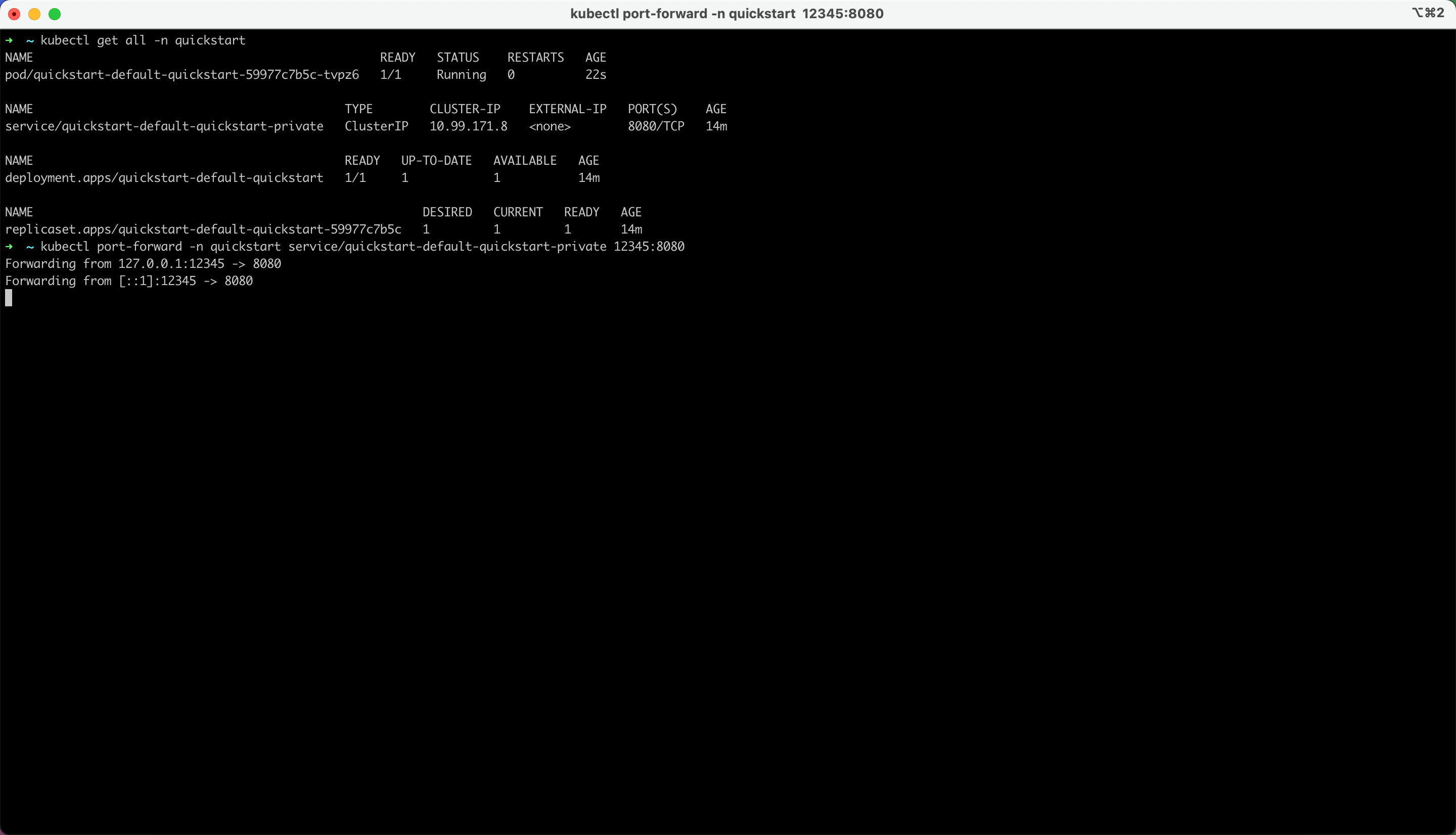
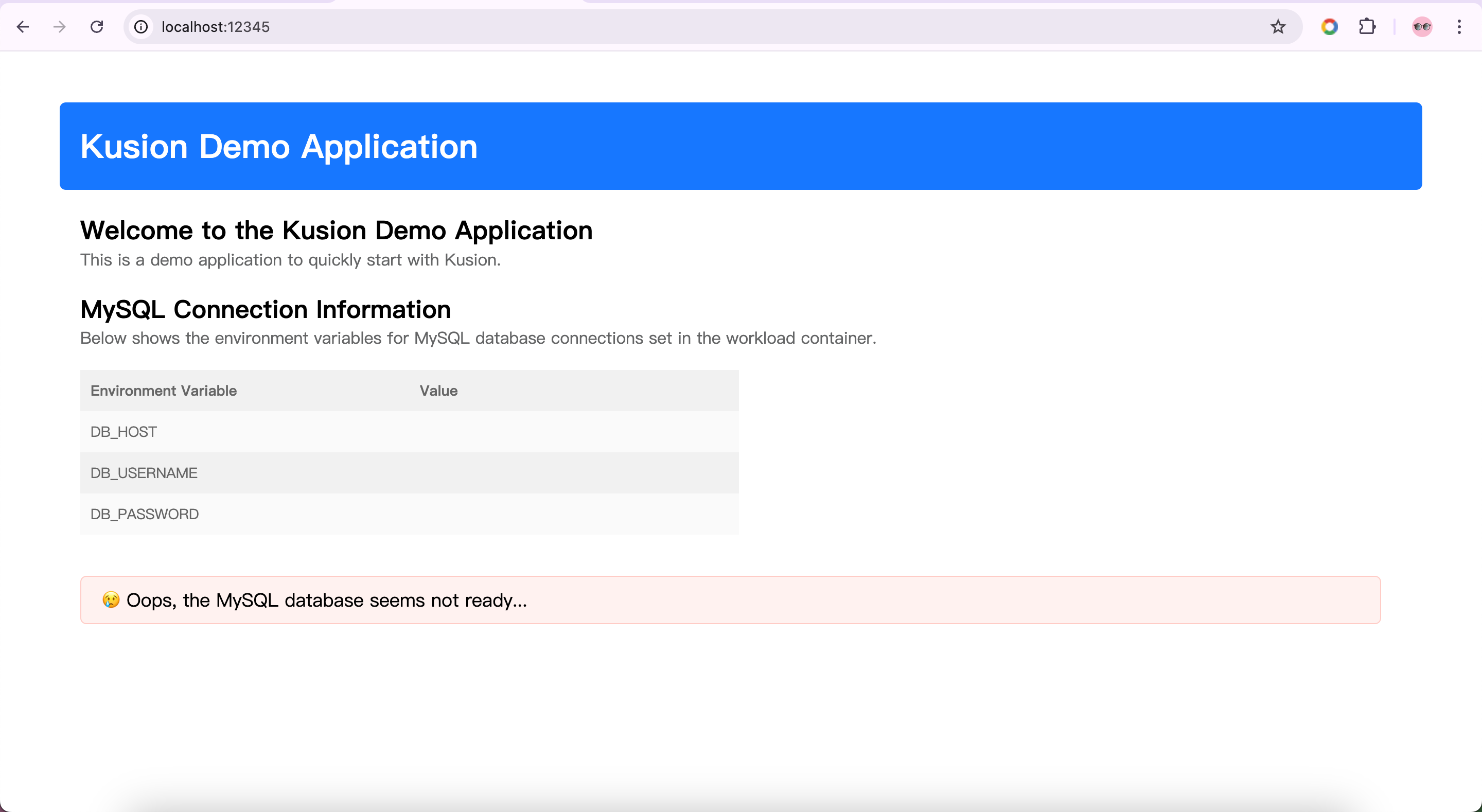
Oops, it seems that the page indicates we are missing a database. But no worries, we will cover how to add a database configuration for our application in the next post.
Kusion by default will create the Kubernetes resources of the application in the namespace the same as the project name. If you want to customize the namespace, please refer to Project Namespace Extension and Stack Namespace Extension.
Delete Application
We can delete the quickstart demo workload and related accessory resources with the Destroy run:
